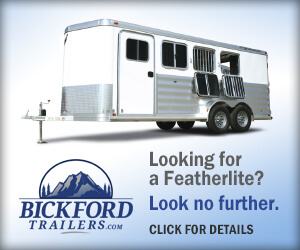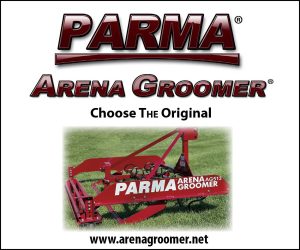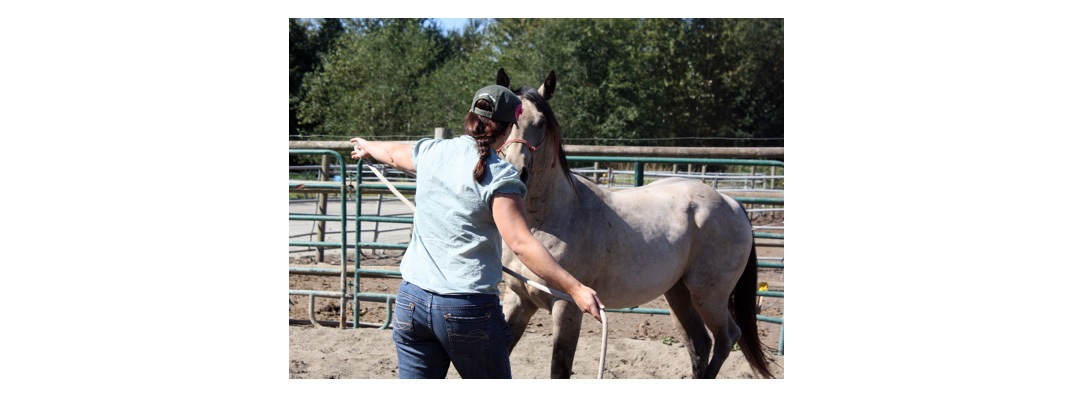Part 2: Application
by Allison Trimble
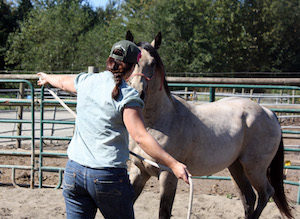
Last month I talked about the philosophy behind horsemanship on the ground. Most problems occur either because the handler does not understand the philosophy, or because the application is not effective. Here are the things that I do with my horses to keep them solid on the ground.
Leading: I see a lot of improper leading. It is the first opportunity, after catching the horse, to work on connection and attention. The horse should be reading the handler’s body, not be lead around by the six inches of rope directly under the chin. The handler should have about 2 feet of slack in the rope and the horse’s position should be an arm’s length from the handler. They should be tracking with their shoulder, just behind the plane of the handler.
There are three things that can become troublesome with leading. The horse with issues will drag along, encroaching on the handler’s space, or blowing past it. Commonly, a horse does both. Every time I lead a horse, whether out of the stall/pasture, for saddling, or out to the arena I do the following exercise. I do it as frequently with my broke old “war horses” as well as with my colts.
On a slack lead rope I walk ahead, and then slow my body, stop, and back up. As I do this, my horse should read my posture and do the same. If he does not, I use the lead rope either to bump him back, or to spank him in the chest to back him up. The cue is my body and the escalation is through the halter/lead and to his chest. If he is good, I carry on with my tasks. If not, I school him with this exercise until I have his attention and he is mirroring me without resistance.
Commonly I see people stop too abruptly for a horse that is not tuned in, and backing up too quickly. If the horse is not with the handler when he slows and stops, he will not be in the back-up either. If he misses the initial cue, I school to that point, not to the back-up. Similarly, I see handler’s change their body position (for example, turning and facing the horse) when enforcing a cue. The handler’s body position must stay the same while schooling, or no progress will be made. A great place to use this drill is when leaving the arena after a ride, or when a group of horses is leaving the area.
Sending: I would say this exercise is 90% of what I do on the ground. It works on space, drive, shoulder control, direction and speed control. It is the foundation for the first ride, and every ride after. Without fail, it connects a horse to me. It is similar to lunging, but with purpose. Personally, I avoid lunging or round penning without direct purpose. I have a work-related goal when I am in a horse’s space. If they are fresh, they need turn out. Blending the two can get wires crossed in communication.
I use a 12 foot lead and a rope halter. (I enjoy Charity rope halters for quality, affordability and intention). I do not use web halters for training; they are for horses that already have a good handle. I send the horse around me in a circle, giving direction with my lead hand and driving them forward with energy and my body focused right behind their drive point (an imaginary line at the withers). The horse should travel at the speed I am asking, with a soft bend in their body. If the horse is too fast, I slow him up with the lead; if he is too slow, I elevate my energy, or use the end of the lead.
Changing direction is the next step. I reach my non lead hand across and ahead of my leading hand and ask the horse to change direction. I softly direct him with my hand, while stepping to the side and putting pressure on his offside shoulder, driving him in the other direction. This exercise is very simple yet can be complicated until the handler gets a feel for it. It combines all the principles needed to connect with the horse and to prepare him for riding. Building on this step, I use it to “send” my horses to different places: through gates, stall doors and into the horse trailer. It is a foundation step that, when missing, causes problems in many aspects of a partnership.
At its finest this exercise should look like a dance, smooth like ballroom dancers. To gain a better understanding, there are three impromptu videos on my YouTube channel: www.youtube.com/willfullyguided
Tune in next month for Groundwork: The Round Pen.
Originally Published October 2014 Issue
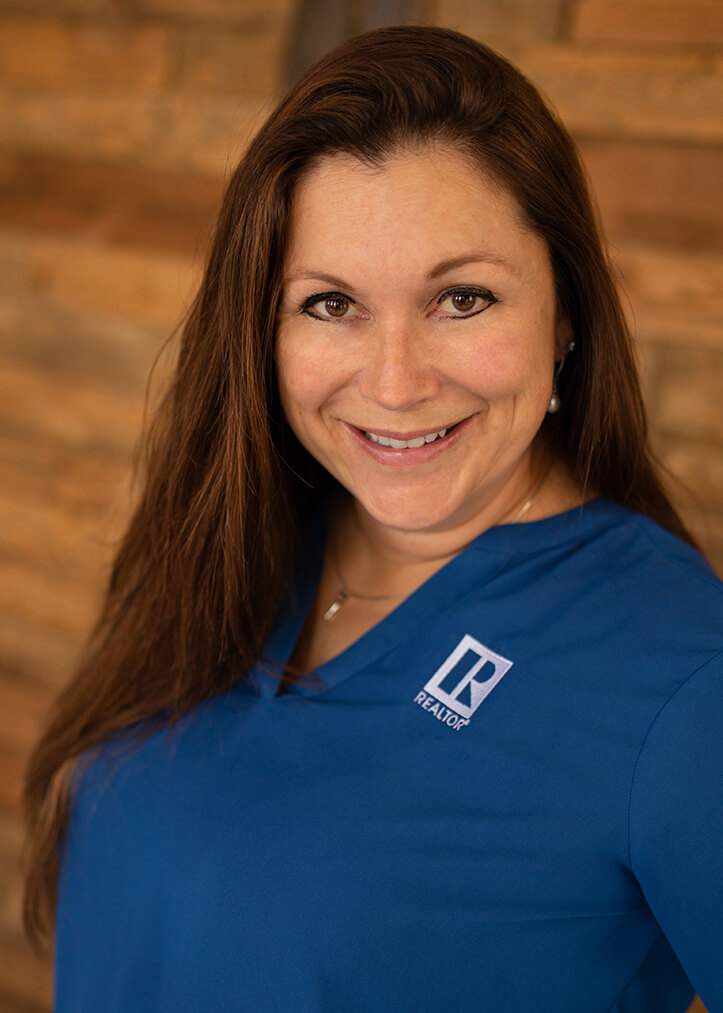
Allison Trimble is a Realtor® specializing in equestrian properties, farm and ranch properties, and residential real estate. She’s a former horse trainer, and a current owner, breeder, and non-pro competitor in cow horse and reining events. For many years, Allison wrote a monthly column for The Northwest Horse Source.
Learn more at www.allisonblakerealestate.com


